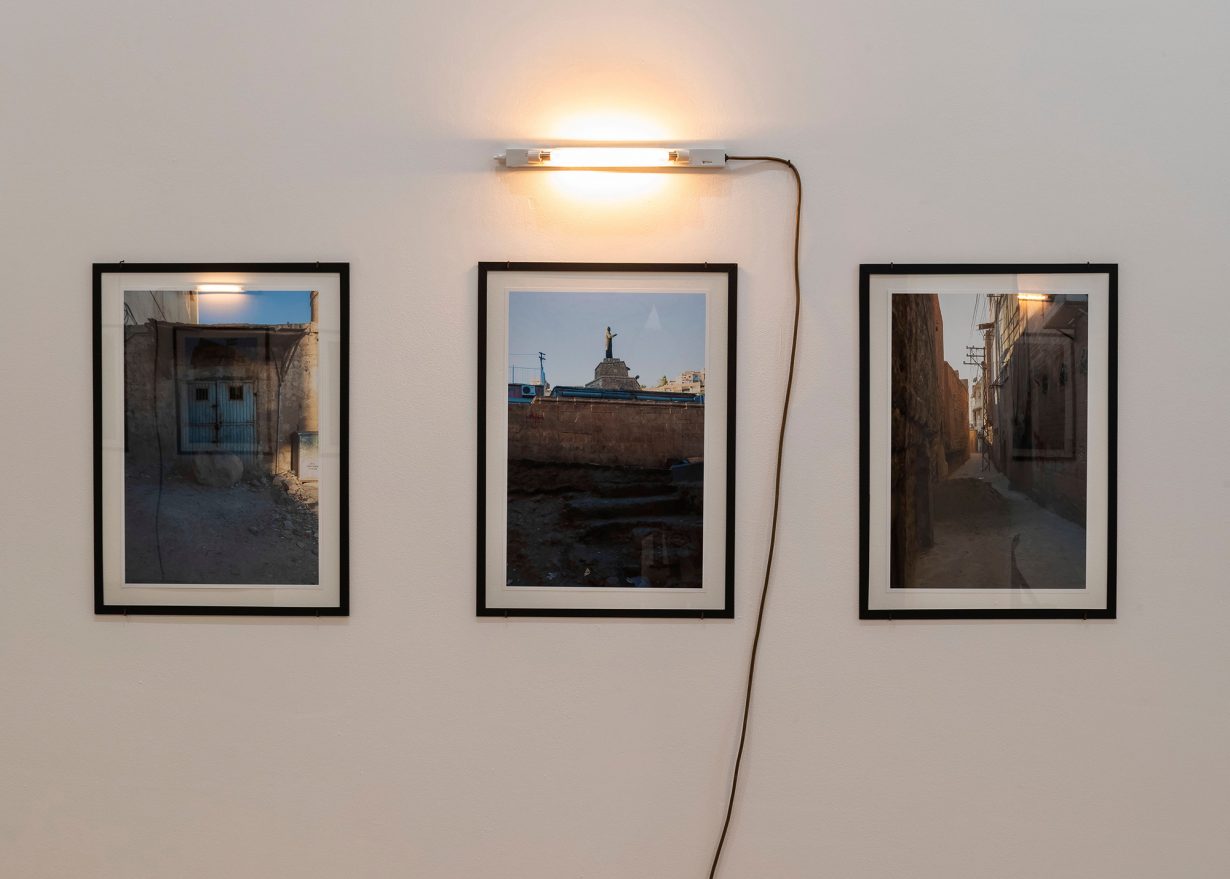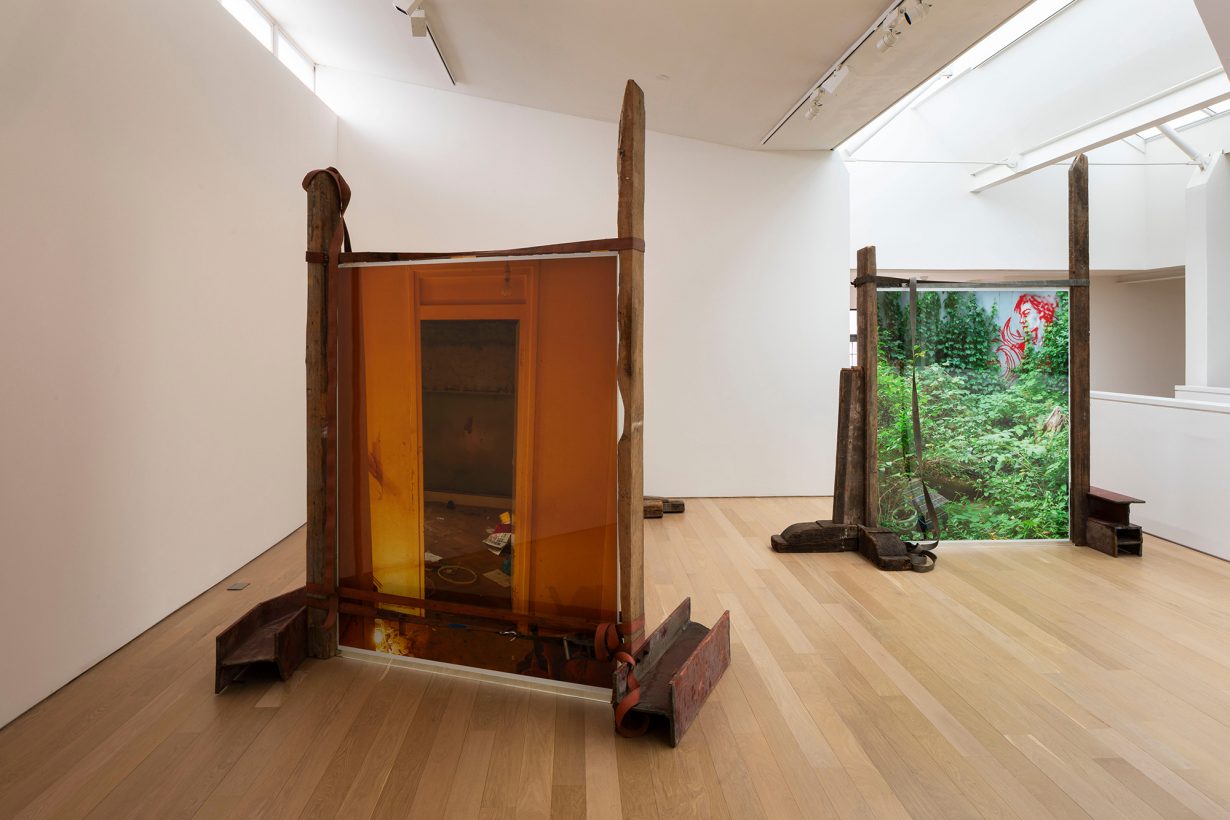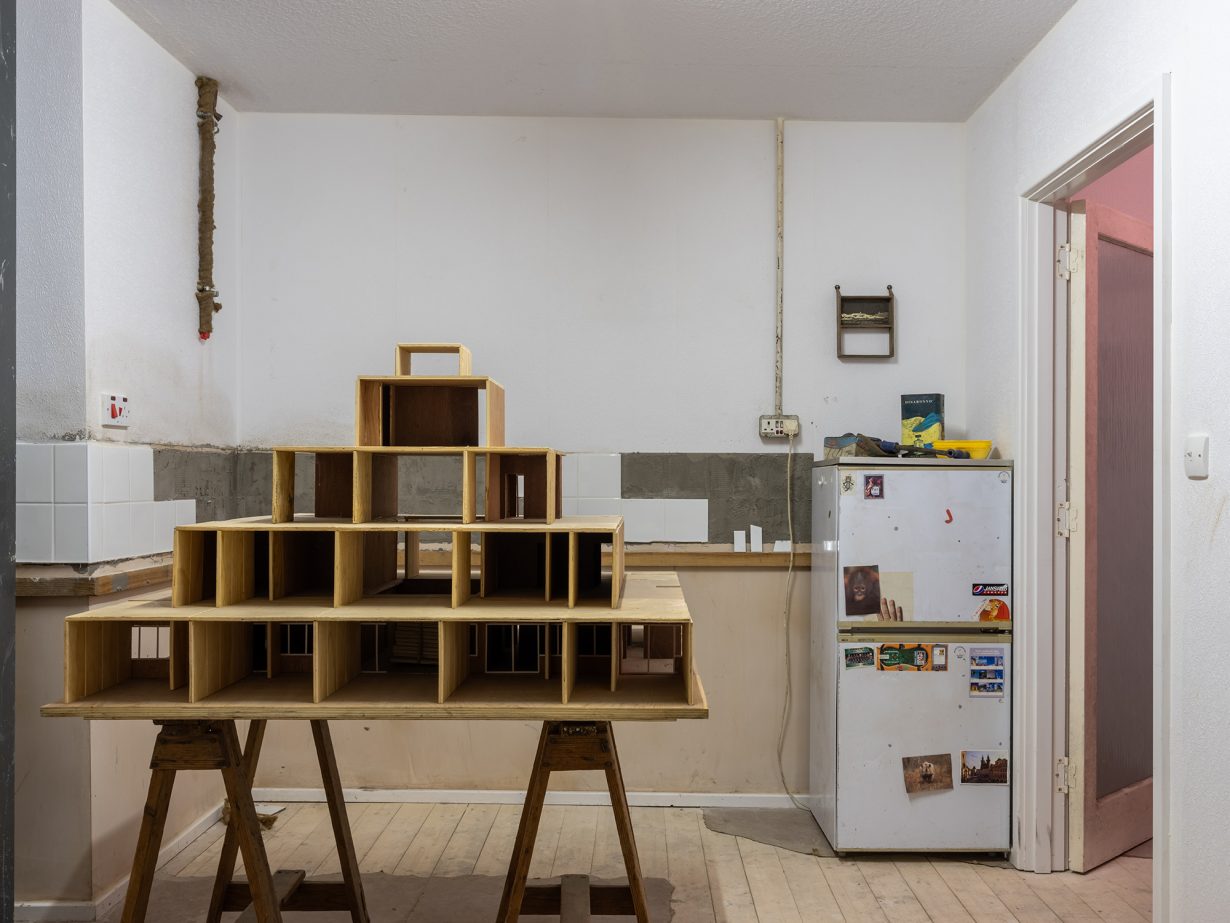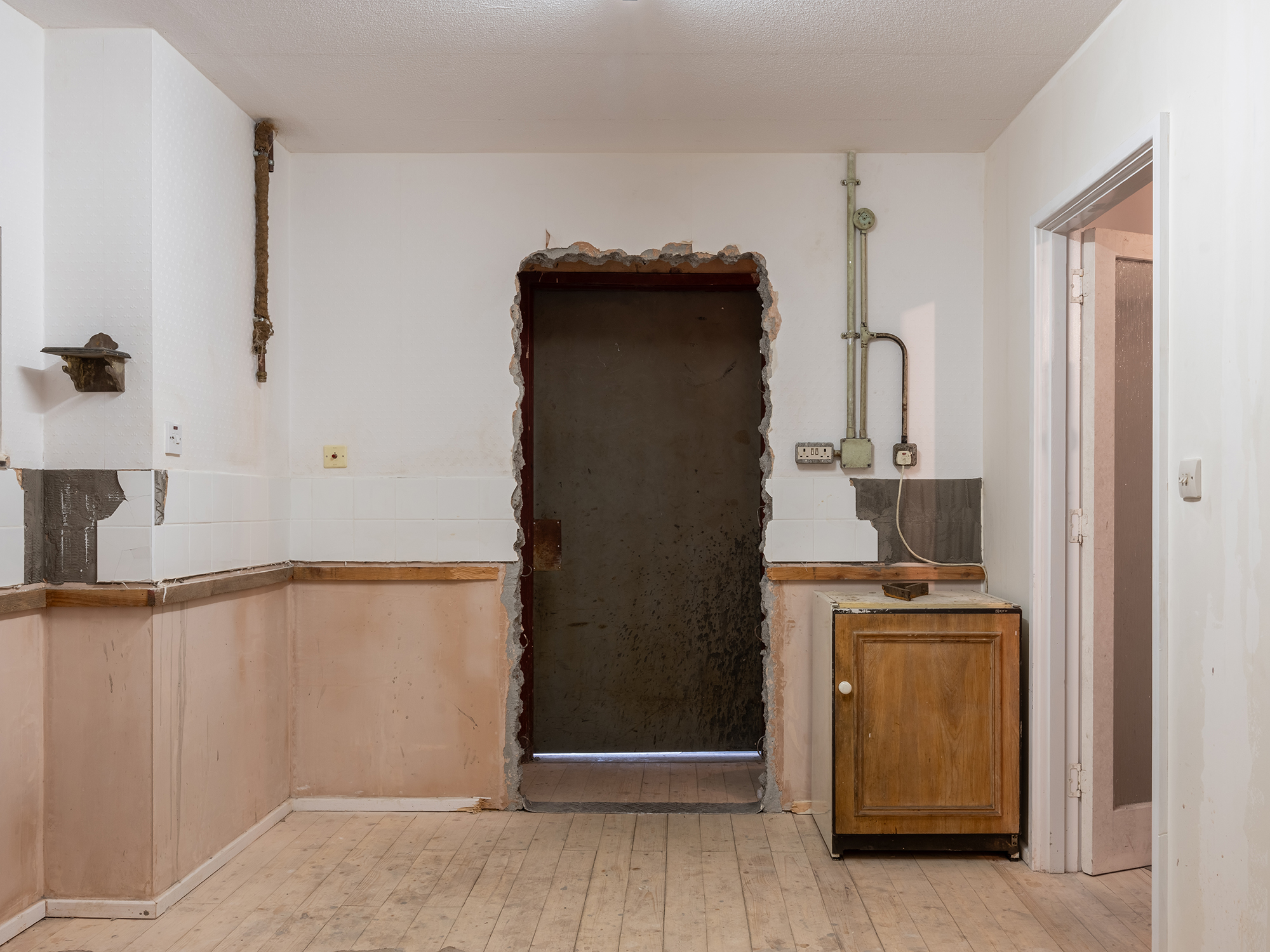Nelson’s Humpty Dumpty once more explores themes of construction and destruction. How many times can he mine this world, while neglecting those who live in it?
On 29 June 2025, two tower blocks on Caledonia Road in the Gorbals in Glasgow were demolished. The buildings were covered in dangerous flammable cladding that it would have been expensive for the housing association to replace. The towers stood in Hutchesontown, which was declared a Comprehensive Development Area in 1957. Crowded tenements were cleared to make way for five zones of modernist tower blocks and lowrise estates, which began construction during the early 1960s. Sixty years later the only highrise towers that remain are those in Area B: the blocks in Area C were demolished in 1993 (in an explosion that killed an onlooker), the two other blocks that stood alongside those on Caledonia Road in Area D were demolished in 2006, while two towers in Area E were demolished in 2012.
A few days after the Caledonia Road flats were destroyed, I visited Humpty Dumpty, the new Mike Nelson exhibition at Fruitmarket gallery in Edinburgh. Spread across three spaces, the show consists of two parts: a transient history of Mardin earthworks and low rise. These two works focus on geographically distant locations but emerge from projects Nelson embarked on between 2010 and 2014, united in their study of construction and destruction. A map of the city of Mardin, in southeastern Turkey, annotated by Nelson when he participated in the 2012 Mardin Biennial, hangs in the ground floor gallery on a temporary wall that has been wrenched out of place and moved to stand in front of the gallery entrance. Photographs taken at spots marked on the map dot the surrounding walls. Piles of gravel, heaps of rubble, mounds of paving stones, curls of pipes – the photos show scenes of construction that have been interrupted or abandoned. Bulldozers and diggers stand still; tools lie unattended on the ground. The work’s title connects these images to Robert Smithson’s ‘earthworks’, but while sculptures like Spiral Jetty (1970) explored the entropic relationship between an artwork and the natural environment, Nelson documents planned infrastructural interventions in an urban context. Shop window mannequins and a statue of Atatürk are the only visible figures in the photographs. Despite being scenes of labour, they’re otherwise unpopulated.

low rise occupies the gallery’s two other spaces. Upstairs a series of large photographs of an abandoned housing estate hang in large sculptural frames constructed from joists, timbers and girders. The flats’ interiors seem long uninhabited, strewn with old newspapers, crushed toilet-roll tubes and plastic bags. Patterned wallpaper, carpets and kitchen tiles are the only traces of past domesticity. As is typical of Nelson’s oeuvre, the gallery’s adjoining warehouse space has been transformed into two of these flats in a similar state of disrepair.

In the exhibition’s accompanying text Nelson explains that low rise was the title of a work intended to be made on a housing estate in South London, which ‘was ceased while under construction in 2014’. The use of the passive voice here is strange, as is the decision not to identify the housing estate in question. ‘Ceased’ by whom and for what reasons?
Following the success of Seizure, a blue cave of crystals created by Roger Hiorns in a London council flat in 2008, the commissioning art organisation Artangel began looking for social housing sites on the brink of demolition that Nelson hoped to rearrange into a pyramid (a wooden maquette of this planned structure appears inside the reconstructed flat in Fruitmarket’s warehouse space). By the time Artangel applied to Southwark Council for planning permission in 2013, residents of the Heygate Estate in Elephant and Castle had been struggling against regeneration plans for years and many tenants resisted being decanted, characterising the council’s intentions for the area as a form of social cleansing.
Artangel did not initially consult with residents or local campaigners who expressed strong objections to Nelson’s project:
––Just because a site becomes empty does not mean that it exists in a neutral vacuum. It contains a local memory and a local desire… art cannot then be produced on this site in a vacuum. If art is to be able to represent or make commentary on the world it is produced in, it has to be produced in some kind of context and that context is both in the realm of its production and its later reception.––
In the end, the pyramid ‘was ceased’ by the council.

According to Nelson’s exhibition text, the unnamed London estate represents the postwar Britain in which it was built and in which he was born, an era that now, his work suggests, lies in literal and metaphorical ruins. An interest in memorialising and mourning this lost period was also evident in his large 2019 installation at Tate Britain, The Asset Strippers, which included a piece that explicitly referenced the Heygate – a pile of long wooden planks, perhaps salvaged from the estate, were piled on top of a steel workbench, which, like the two parts of Humpty Dumpty, seems ambiguously poised between creation and demolition. In the text accompanying Humpty Dumpty, Nelson writes that the photographs of the estate were printed ‘to appear real scale in an attempt to invoke that which has been demolished and disappeared. The disappearance not only relates to the buildings’ material reality, but also to those that inhabited it and the ideology that made those homes possible.’ Nelson implicitly bemoans the passing of a social democratic commitment to social housing, but rendering the people who lived at the Heygate (and those who dug the streets of Mardin) invisible is ideological in its own right. Interviewed about Nelson’s proposed pyramid in The Guardian in December 2013, John Colfer, who grew up on the estate, asked: ‘what is there to show that this was a well-loved home?’
Catherine Yass’s 2008 film High Wire, also commissioned by Artangel, showed a man walking a tightrope between two of the towers on the Red Road estate in northeast Glasgow, which were built in the same period as the Caledonia Road flats and the Heygate, and which have also now been demolished. Yass was interested in the estate as an example of a utopian architectural and social vision that failed. But as in low rise, the social, economic and political processes that led to that ‘failure’, as well as the struggles of tenants to resist those processes, were absent from her work.
Many postwar British social housing estates have since been demolished, while Thatcher’s introduction of Right to Buy (abolished in Scotland in 2016) severely diminished Britain’s social housing stock even where physical buildings remain intact. But working-class people in need of affordable housing are not a thing of the past. Nelson’s beautiful images of the deserted Heygate on the cusp of demolition are melancholic and seem tinged with regret, but the recent past of property development, regeneration and displacement appears almost as a natural process, which, like sentences written in the passive voice, lack subjects who act.
Hannah Proctor is a historian of radical psychiatry at the University of Strathclyde in Glasgow. She is the author of Burnout: The Emotional Experience of Political Defeat (2024)
